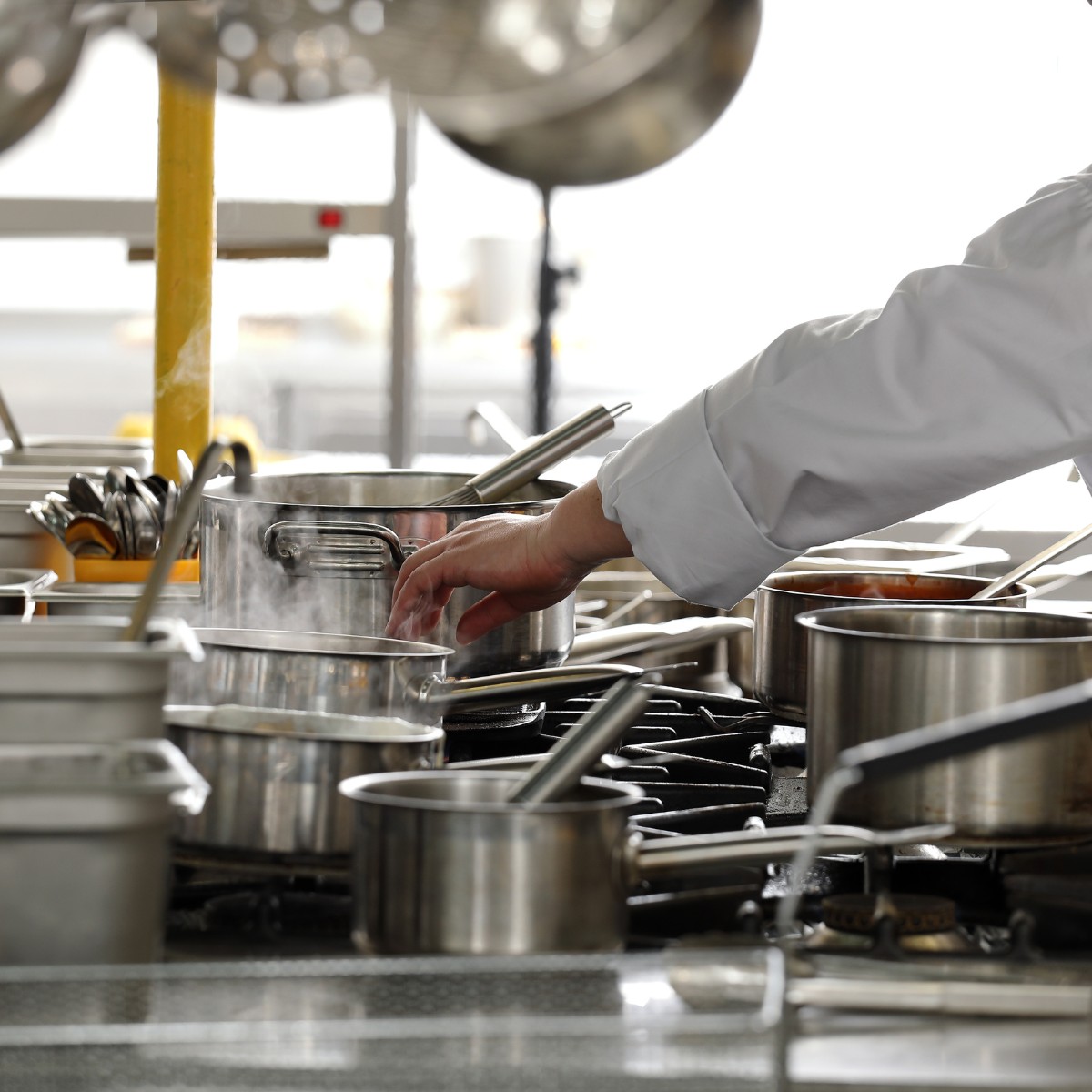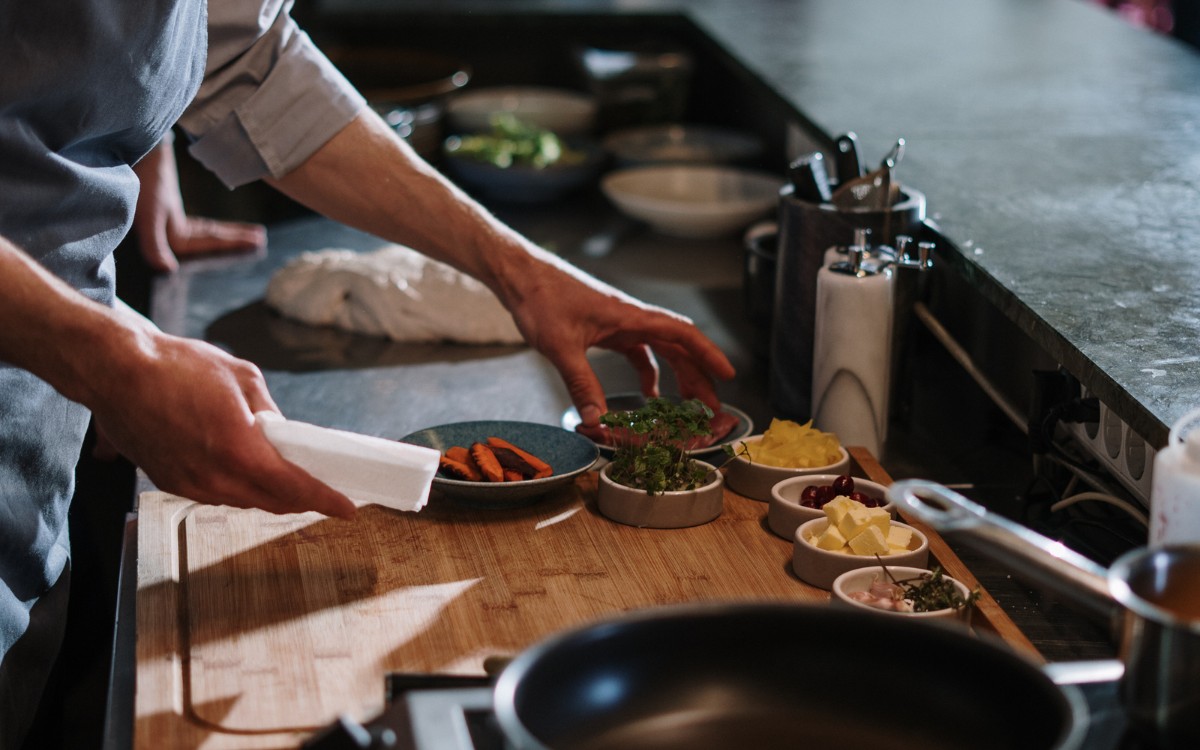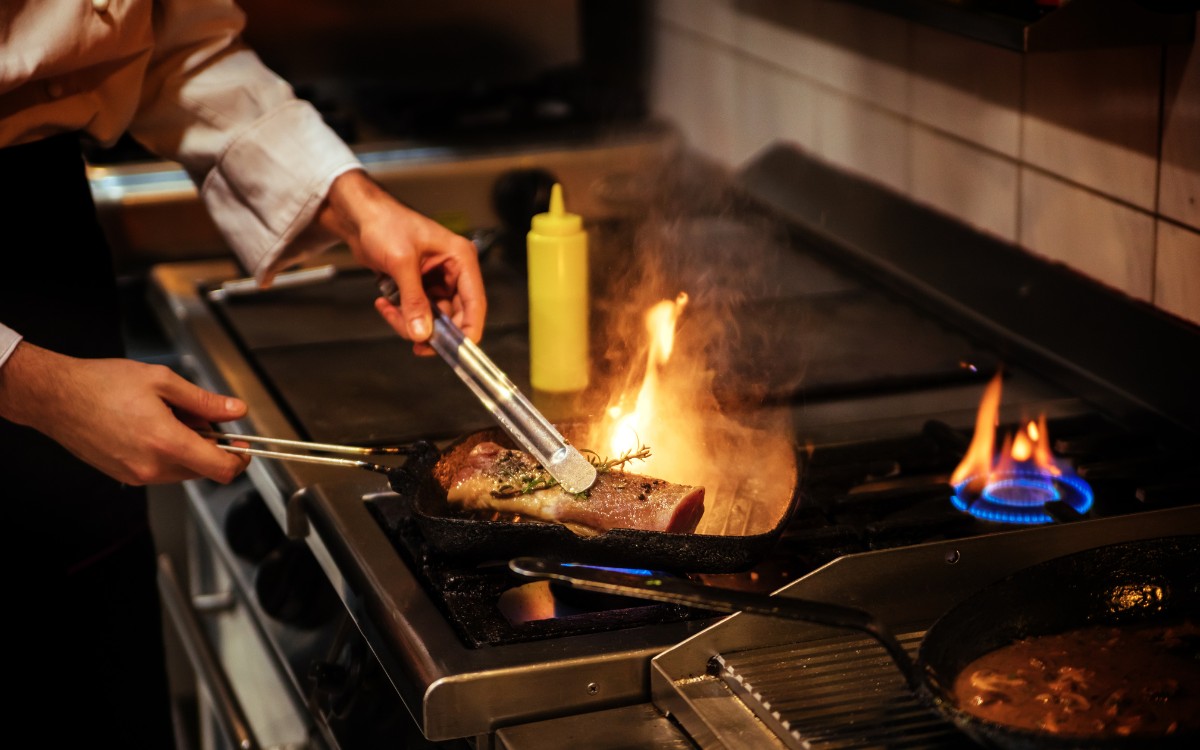Privacy Policy | Terms and Conditions | Disclosure Statement | License Policy
COPYRIGHT © 2024 | NUMBER 8 COOKING | ALL RIGHTS RESERVED.

Privacy Policy | Terms and Conditions | Disclosure Statement | License Policy
COPYRIGHT © 2024 | NUMBER 8 COOKING | ALL RIGHTS RESERVED.

Privacy Policy | Terms and Conditions | Disclosure Statement | License Policy
COPYRIGHT © 2024 | NUMBER 8 COOKING | ALL RIGHTS RESERVED.
Working in a professional kitchen requires navigating organized chaos, that is why I’ve put together a beginner’s guide to kitchen slang. Chits flying from the kitchen printer cooks communicating across the line. The Executive Chef coordinating it all.
The pace is relentless, and during the dinner rush, the team gets in the weeds with tickets stacking up. Cooks race to fire orders on the fly while contending with burning pans and weaving behind each other carrying food.
The kitchen environment is intense, filled with sizzling sounds and chefs shouting commands like “hot behind” and “Yes chef!” To an outsider, this would seem like complete madness. The complex culinary lingo that they can’t understand. It’s like chefs are speaking a different language.
If you’re aspiring to become a chef this beginner’s guide to kitchen slang is for you. For anyone new to this environment, the complex kitchen slang can be overwhelming. Master this A to Z guide of essential kitchen slang to navigate the controlled chaos of a busy restaurant kitchen.

Kitchen slang is the unique language used by chefs and cooks in professional kitchen environments. This insider language functions as a vital communication system in busy professional kitchens. Allowing teams to speak efficiently with clarity and understanding.
The fast-paced nature of commercial cooking requires awareness from the chefs managing busy services. Follow this guide to kitchen slang to come to grips with this unique culinary lingo.
Alive And Kicking – Refers to a blue steak or extra rare. Seared on the outside, warm and undercooked in the middle.
À La Minute – A French culinary phrase that refers to food made quickly to order. Rather than prepped ahead of time.
All Day – The consolidated quantity of menu items required to fulfill all current customer orders. (Including all incoming orders).
Back Of House – (BOH) refers to the behind-the-scenes areas of a restaurant. As opposed to the front of house (FOH) where customers dine.
Board/Rail – The board or rail where all the chits are kept.
Burnt – A kitchen team member who is exhausted. “I’ve done 16 hours and I’m burnt.”
CDP – Chef de Partie French term for a station cook or line cook.
Chit – Another name for a kitchen docket or order ticket.
Cross-Utilized – Using a raw or prepped ingredient across two or more menu items.
Dead Plate – A prepared meal that can no longer be served. Possible reasons are overcooked, prepared or plated wrong, or cold.
Deuce – Table of two diners. “I’ve got a deuce on Table 7.”
Duke Box – Another name for a microwave oven.
Dupe – Refers to a duplicate or carbon copy of an order ticket (chit) from the kitchen printer.
Dying On The Pass – Refers to a prepared meal that has remained sitting on the pass for far too long. Resulting in it starting to get cold. (Refer to dead plate.)
Expo – The expeditor who manages chit flow and calls the orders. They also add the final touches to meals before being served.
Fire – Verbal call to begin cooking a table’s order.
Flash It – To quickly finish cooking an ingredient that is undercooked.
Floor – The dining room or customer area.
Front Of House – (FOH) where customers dine (dining room). As opposed to the back of house (BOH).

Green – New and inexperienced staff member.
Hands – Kitchen staff and team members. “All hands on the line.”
Heard – Kitchen call that order has been received.
Hot Behind – Heads up that someone is walking behind you carrying hot food.
In The Weeds – It conveys that the kitchen is extremely busy, at maximum capacity.
Juice – Electricity that powers kitchen appliances.
Kill It – Overly well-done steak. “Get that sirloin for table 6 and kill it.”
Kitchen Bitch – Unflattering term for lowest ranked cook.
Larder/Pantry – Station that prepares cold foods like salads and cold starters.
Last Call – Final opportunity to fire an order before closing.
Meal On The Bottom Of The Plate – Refers to the bottom of a plate that is not washed properly and dirty.
Mains/Hot Line – Section that cooks hot main meals. “I’m on mains tonight.”
Mid-Rare – Cooking degree 54-57ºC (129-134ºF) for meat that’s pink inside.
Mise – Short for mise en place, meaning food prep.
Nuke It – Reheat food in a duke box (microwave oven.)
On The Line – Refers to cooking on the line.
Order Pickup – Notice that a table’s food is ready for service.
OTS – On the side, an ingredient for a dish that the customer has requested on the side.

Pass – The countertop where finished garnished plates sit briefly before servers pick them up.
Run The Dish – Refers to a server taking a dish to the customer.
Running The Pass – A chef who calls out orders and coordinates the kitchen. Usually senior kitchen staff Sous Chef or Head Chef.
Service – Refers to a meal period where the restaurant is open and serving food.
Shoe – Someone who is bad at cooking.
SOS – Sauce on the side. Sauce for a dish that the customer has requested on the side.
Stretch It – Making a small amount of food cover more portions.
Wait On – Order not ready yet, waiting for a dish to be finished.
Walk-in – Large refrigerated storage area in the kitchen.
Waxing A Table – Giving a table VIP treatment.
Yes, Chef! – Kitchen response showing respect to the chef. Or that calls have been understood.
86 – A particular ingredient or menu item has sold out and is no longer available. At times popular items sell out and need to be removed from the menu.
#, Top – The number of people seated at a table. 4 top, 5 top, 6 top.
#, Out – How many minutes until a dish or ingredient is done cooking and ready to serve.
Kitchen slang refers to the unique vocabulary and jargon used by chefs and other kitchen staff in professional kitchens. It includes specialized terms, abbreviations, metaphors, and colorful phrases. Used to communicate quickly and efficiently in high-pressure kitchen environments.
Chefs rely on kitchen slang to quickly communicate and maintain focus during busy services. The fast-paced nature of commercial kitchens requires clarity. Slang provides a shorthand way to refer to foods, techniques, staff roles, and situations.
When a chef calls out “86 fries!” it means the kitchen has run out of French fries. To “86” something is to remove an item from the menu. This is due to it being sold out or unavailable.
After years of working in professional kitchens. I’ve come to appreciate the unique language and kitchen slang used every day by chefs.
Though confusing at first, I learned very quickly that these terms like 86, fire, on the fly, and in the weeds. Serve as an important purpose in the high-pressure, fast-paced environment of a restaurant kitchen.
Kitchen slang provides a shorthand way for chefs to communicate quickly and effectively as a team. When I was young mastering this insider lingo made me feel part of the team and embrace the culture of the culinary world.
Creating this A to Z guide to kitchen slang has been a passion project for me. Writing this has brought back lots of good memories. I wanted to provide an essential reference tool for anyone eager to understand the colorful language of chefs.
I hope this guide provides you with a helpful introduction to this unique form of communication. That is vital to a professional kitchen.
Though cryptic to any outsider, a mastery of kitchen slang offers a window into the culinary world. This guide to kitchen slang is what helps bring food from the kitchen to the dining room.